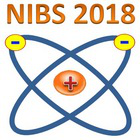Conveners
2nd Session
- Werner Kraus (Max-Planck-Institut für Plasmaphysik)
Dr
Dirk Wünderlich
(Max-Planck-Institut für Plasmaphysik)
03/09/2018, 11:10
H– and D– sources for fusion, accelerators and other applications
Oral
The ion source of the ELISE test facility ($0.9×1.0 \,\mathrm{m}^2$ with an extraction area of $0.1 \,\mathrm{m}^2$) has half the size of the ion source foreseen for the ITER NBI beam lines. Main aim of ELISE is to demonstrate that such large RF driven negative ion sources can achieve the following parameters at a filling pressure of $0.3 \,\mathrm{Pa}$: extracted current densities of $28.5 \,...
Dr
Christian Wimmer
(Max-Planck-Institut für Plasmaphysik)
03/09/2018, 11:40
H– and D– sources for fusion, accelerators and other applications
Oral
The Neutral Beam Injection (NBI) system for ITER requires large scale sources for negative hydrogen ions. The ELISE test facility at IPP Garching uses a ½ scale ITER-source (extraction area of 0.1 m$^2$ at ELISE) and shall demonstrate the feasibility of the ITER parameters (extracted $j_\mathrm{H^-} = 329~ \mathrm{A/m^2}$ for 1000 s, $j_\mathrm{D^-} = 286~\mathrm{A/m^2}$ for 3600 s, with a...
Prof.
Katsuyoshi Tsumori
(National Institute for Fusion Science)
03/09/2018, 12:10
Fundamental processes and modelling
Oral
The consumption rate of caesium (Cs) for negative hydrogen (H-) ion source increases when the source operation gas is changed from hydrogen to deuterium. A clear indication that a deuterium discharge erodes Cs atoms on the surface to increase work function, and thus, co-extracted electron current. We have proposed a model that the enhanced sputtering yield of Cs from the plasma grid (PG) due...

